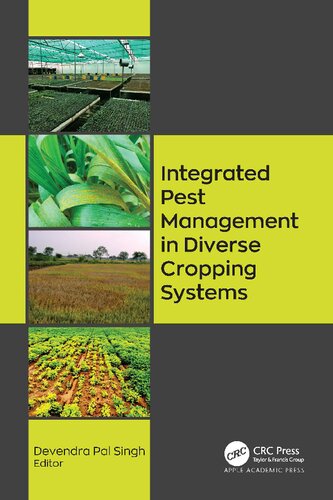

Most ebook files are in PDF format, so you can easily read them using various software such as Foxit Reader or directly on the Google Chrome browser.
Some ebook files are released by publishers in other formats such as .awz, .mobi, .epub, .fb2, etc. You may need to install specific software to read these formats on mobile/PC, such as Calibre.
Please read the tutorial at this link: https://ebookbell.com/faq
We offer FREE conversion to the popular formats you request; however, this may take some time. Therefore, right after payment, please email us, and we will try to provide the service as quickly as possible.
For some exceptional file formats or broken links (if any), please refrain from opening any disputes. Instead, email us first, and we will try to assist within a maximum of 6 hours.
EbookBell Team

4.3
48 reviewsClimate change has intensified in recent decades, which has affected crop production as well as facilitated the emergence of new diseases and insect pests, causing serious threats to agriculture. Farmers have mostly taken a crop-based approach to insect pest management (IPM); the authors of this new volume, however, take the unique approach that IPM based on specific cropping systems is more efficient, resulting in reduced cultivation costs, increased yield and profitability, and decreased residue from crop produce and products. This volume presents the results of research done by crop protection scientists on integrated pest management in diverse cropping systems based on rice, wheat, maize, pulses, food legumes, oilseeds, groundnut, potato, and other horticulture crops.
With chapters written by well-known and experienced scientists in their fields, this volume provides in-depth knowledge on integrated pest management in conjunction with an array of specific cropping systems, taking into consideration all the elements, including the crops, crop sequences, spatial and temporal aspects of managing an agricultural system, and other aspects.
This volume will be valuable for entomologists, plant pathologists, and agronomists, as well as for farmers―both small and industrial sized, agricultural extension centers, faculty and students, and many others involved with crop cultivation.